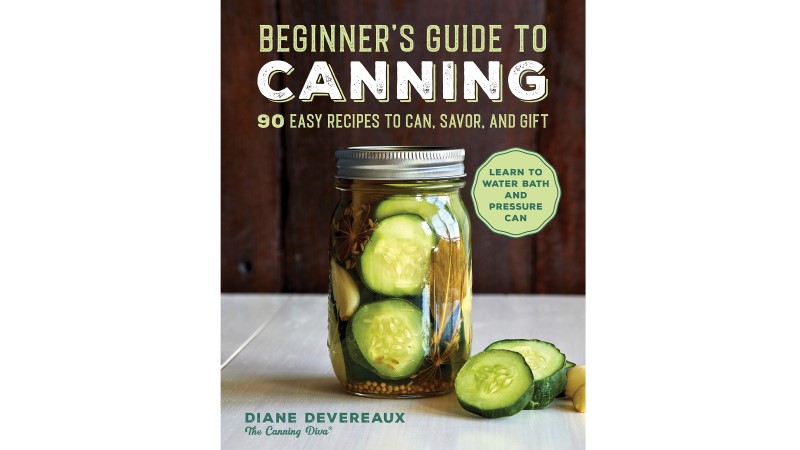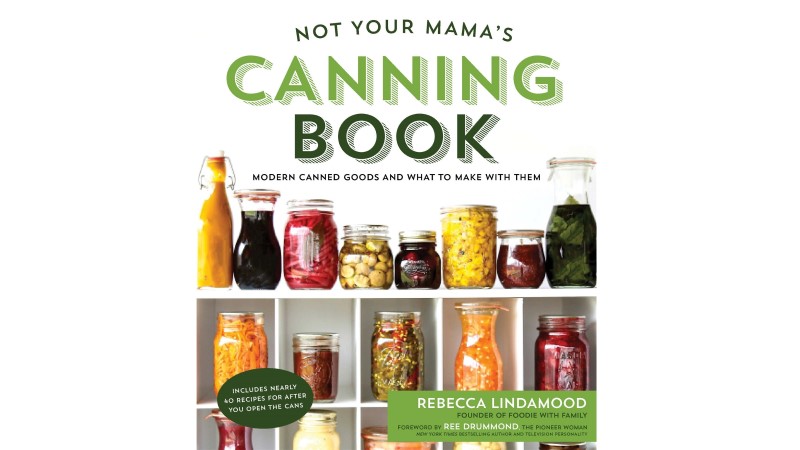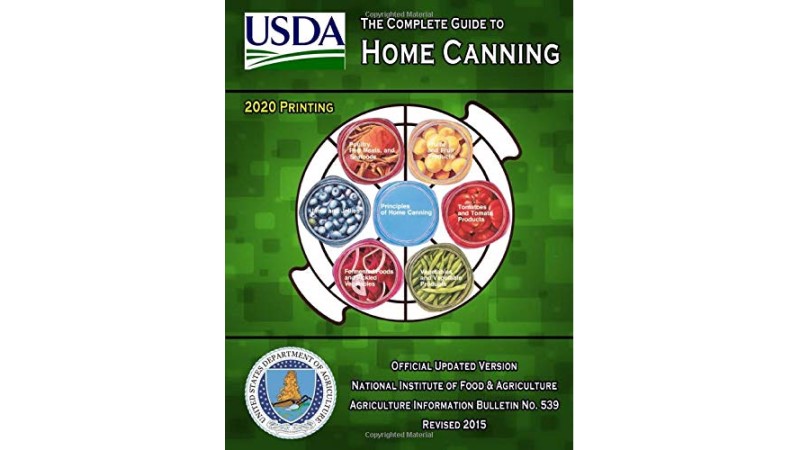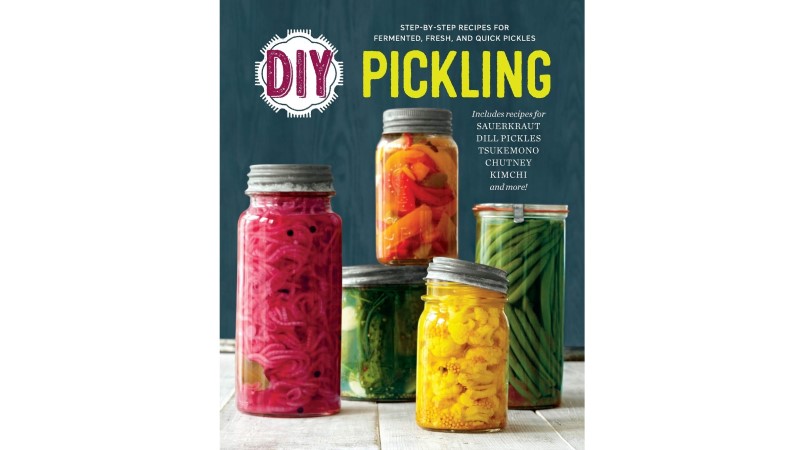Best canning books
Preserve your garden's bounty, or learn how to make your favorite pickles with the best canning books around to show you how.

Canning at home, while time-consuming, doesn't need to be tedious. Unfortunately, due to the threat of botulism or rogue yeasts taking hold, it's also an activity you need to read up on so that you and your loved ones don't get sick. As a result, the search for the best canning books can be nitpicky.
Still, I think that our staff pick from legendary mason jar maker Ball delivers on that delicate balance of education, technique, and food safety. Rather than moonlighting in bars as cocktail glasses, this book helps you use your Ball jars for their original purpose. Over 400 recipes are included, so there's something for everyone. Most of the canning books you'll see below are generalized and teach multiple canning techniques. In contrast, others focus on specific preserved foods like pickles or jellies. Check out my favorites below, and add one to your bookshelf.

Ball Complete Book of Home Preserving by Judi Kingry
Staff pick
Consider Ball's comprehensive text if you want to use Ball jars for their true purpose—preservation.
Pros:
- Perfect for beginners
- 400 recipes
- Lists equipment and utensils needed
- Follows USDA guidelines
Cons:
- No Kindle edition
Ball jars genuinely are the gold standard for canning and preserving fresh foods. It makes sense, then, that they'd produce an essential guide to using them correctly. Ball's book by Judi Kingry contains an incredible 400 recipes, including vinegar, chutneys and jams, pickles of all sorts, and even barbecue sauce. In addition, the book has been updated as of 2020 to incorporate no/low sugar variations of their most popular recipes.

Beginner's Guide to Canning: 90 Easy Recipes to Can, Savor, and Gift by Diane Devereaux
Save money with the Kindle edition
Diane Devereaux, The Canning Diva, welcomes you to look at canned food as not only delicious but gift-worthy.
Pros:
- Excellent deal on Kindle vs. paperback
- Ideas for all four seasons
- Water bath and pressure canning
- Emphasizes safety
Cons:
- Only 90 recipes
Attention, fellow Kindle-owners, who are also cooking enthusiasts: this is the book to buy if you're interested in learning how to preserve your food. It is an ultra-affordable guide to both water bath and pressure canning. Seasonal produce is frequently highlighted, and readers are encouraged to take advantage of its natural beauty and see it as gift-worthy.

Not Your Mama's Canning Book: Modern Canned Goods and What to Make with Them by Rebecca Lindamood
Canning for current times
Creative culinary concoctions abound in food blogger Rebecca Lindamood's modern home canning bible.
Pros:
- Unique flavors
- Canning various sauces help you cook faster
- Kindle version is half the price
- Savory and sweet recipes
Cons:
- Recipe focused, rather than technique
- Some recipes are pressure-canned only
Popular ingredients in new combinations and a peek into the world of sauces, soups, and pies in jars are what sets Rebecca Lindamood's tome apart from its competitors. It's a thoroughly modernized view of home canning, encouraging you to think outside the box. Preserve your own tikka masala sauce, soup concentrate, and smoky roasted salsa—self-sufficiency doesn't need to taste bland or take forever to accomplish. For example, a classic recipe like canned peaches in syrup is reborn as bourbon brown sugar peaches, perfect for baking a quick cobbler. You can even transform your plain black beans into zesty chili that's ready to eat in minutes. Lindamood includes full recipes in the second half of her book that use the canned goods you've made, making her guide indispensable.

The Complete Guide to Home Canning: Official U.S. Department of Agriculture Information Bulletin
Step-by-step success
Revised in 2015 to reflect modern preservation guidelines, the Official U.S.D.A. bulletin on canning is written with the beginner in mind.
Pros:
- Another great deal on Kindle
- Thorough explanations
- Meat and fish recipes
- Teaches canning safety
Cons:
- Paperback with spine, not spiral-bound
- Light on recipes
Suppose you're looking for the safest possible way to start canning and preserving at home. In that case, this bulletin from the U.S.D.A. should be your pick. Beginners and seasoned pros will benefit equally from its illustrated, thoroughly covered topics of sterilization, proper procedure, and water bath vs. pressure canning. It even tells you how to preserve meat and fish by canning, which other books might not include. Frustratingly, the included recipes tend toward so traditional they're boring. Nevertheless, this book makes up for that with the depth of information provided.

DIY Pickling: Step-By-Step Recipes for Fermented, Fresh, and Quick Pickles by Rockridge Press
We can pickle that
Pickle your way to pure happiness with DIY Pickling's step-by-step process to fresh or fermented pickles fast.
Pros:
- Over 100 recipes
- Troubleshooting guide
- Recipes from many cultures
- Teaches pickling vs. fermentation
Cons:
- Single-subject book
While many might buy this book just because it's all about pickles, that could be a downside for some that prefer a more well-rounded canning resource. If you're single-minded and adore pickles, then pick up Rockridge Press's pickling guide. It's colorful, well-designed, and includes recipes from all over the world. Kimchi, sauerkraut, chutney, root vegetables, and fruits are all preserved at the peak of freshness by pickling or fermentation. There's actually a difference; fermentation is the process of sugars being broken down by bacteria to create acid or alcohol. Pickling simply requires placing your ingredients into a pre-existing acid (like vinegar) or alcohol (like Everclear, sugar, water, and lemon peels to make limoncello). The guide also teaches you how to incorporate your pickles into meals and store and inspect the finished pickles for signs of spoiling.
Bottom line
The best canning books teach the basics of canning and focus directly on food safety. Overall, I think each book I covered above would be a fine purchase for those looking to learn home canning. Our best overall canning book is from Ball, the mason glass jar company—we're all familiar with their iconic logo and silver lids. Ball jars are typically used for home canning and preserving because they're easy to sterilize, so it's fun for home cooks to learn to use them to store seasonal produce and treats.
I also liked Diane Devereaux's canning guide and would gladly add it to my cookbook collection. Diane's been writing about home canning for over 30 years, and her experience (and creativity) shows in all 90 recipes. The value can't be beaten, and she's meticulous about safe canning procedures. The canning book I plan to pick up, however, is DIY Pickling. If you're pickle-obsessed like me, let's give it a try.
Lili Angrisano is a freelance contributor for both GardeningEtc and Real Homes. In her spare time you will typically find her designing her next cosplay, conquering her 700+ book (and counting!), reading the latest release on her Kindle library, or tending to the many plants and flowers in her much-loved apartment garden.
